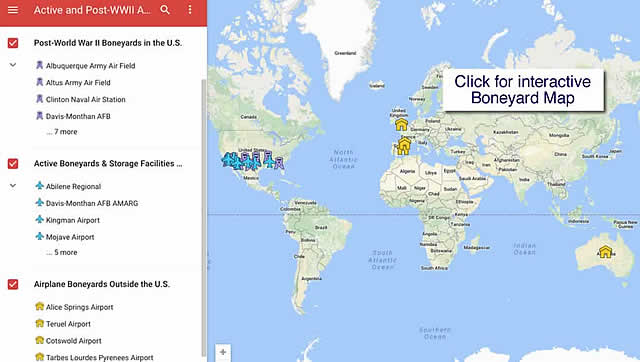
Airplane Boneyard Storage, Parts Reclamation, & Scrapping Operations
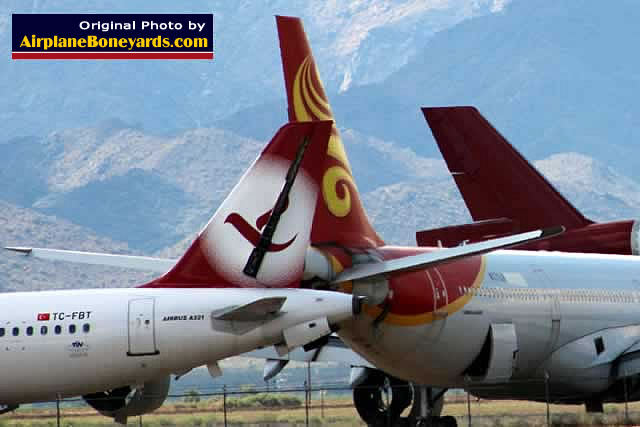 Jetliners in storage at the Phoenix Goodyear Airport in the Arizona desert (Staff Photo) |
When It's Time for Airliners to Retire
How DO airliners end up being scrapped?
Commercial airliners have limited lifespans. Ultimately, they must be retired from service, stored in "airplane boneyards" or graveyards, and finally dismantled and scrapped.
Airliner boneyards in the deserts of the western United States provide several types of services:
- Temporary storage pending return to service
- Maintenance and overhaul
- Parts reclamation and part-out
- Scrapping and recycling
Similar facilities exist around the world, in countries like the U.K., Spain, France, Australia and other locales.
Airliner Flightline Storage & Parking Facilities
Some jetliners are temporarily taken off flying status, and must be stored in a environment that is conducive to preservation pending return to service.
An airliner might be stored in a transitional flightline parking area due to economic conditions, fuel prices, airline consolidation, downsizing, airline bankruptcy or other aviation industry fluctuations.
To protect airliners from wind and sun damage during their storage, engines and windows are tightly covered with white, reflective materials. A sealed airliner can thus be stored safely, for years, until the time comes to return it to active duty, or salvage.
Panoramic view of jetliners in storage at the Phoenix Goodyear Airport (Staff Photo) |
 |
Boeing 747 airliners from Atlas Air and Southern Air in storage at the Mojave Airport in the California desert (photo courtesy of the Mojave Air and Space Port) |
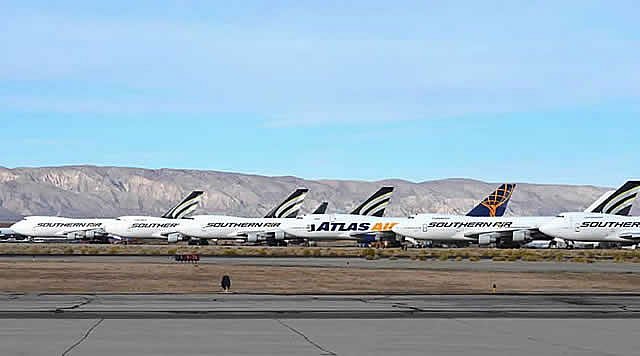 |
Continental Airlines Express jets in storage in the desert at the Kingman Airport in Arizona (Staff Photo) |
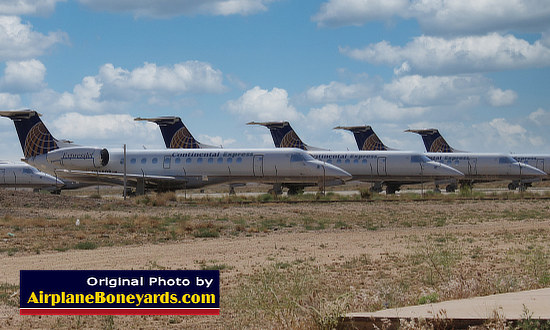 |
Ex-Delta Airlines Boeing 757 airliners being reclaimed at Pinal Airpark, Arizona (Staff Photo) |
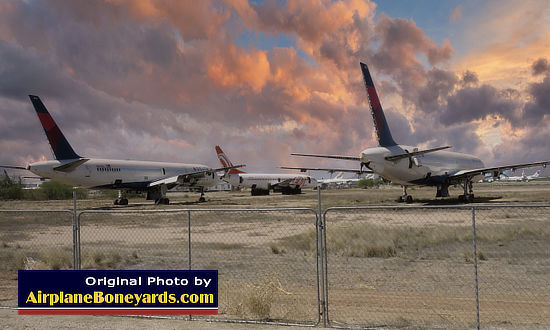 |
Aircraft End of Life Options
There is no set industry rule or standard, but many commercial airliners reach "end of life" at about 25 years of age. Aircraft "age" is measured in not only in years, but also in terms of pressurization cycles, which cause stress on the fuselage and wings. Airliners that make more long trips are stressed at a lower level than those flying several short flights a day.
Additional factors such as fuel prices and efficiency, evolving aviation regulation, operational costs, technical obsolescence, and depreciation enter into this end of life decision.
As an airliner ages, maintaining airworthiness becomes more expensive, a point in time in which an airline will decide that the best business option is to sell the aircraft. Eventually, all airliners are removed permanently from service and must be dismantled and recycled.
While some might be sold to other airlines, others are worth more when broken down for parts. Those with detailed, accurate service records are often worth more than those whose records have been lost or mismanaged.
Industry experts estimate that 12,000 airliners will face retirement in the next 20 years. Bombardier predicts that 5,000 aircraft in the 60-150 passenger range will face retirement by 2034.
Ex-Iberia Airbus A340 being reclaimed at the Phoenix Goodyear Airport (Staff Photo) |
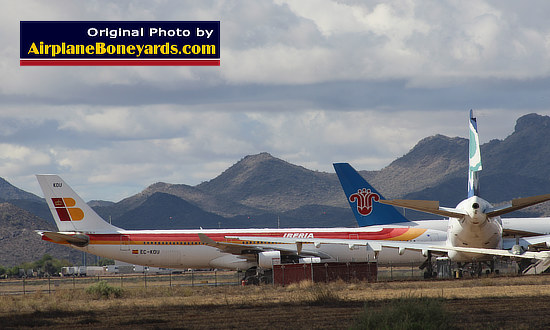 |
The Airplane Dismantling and Scrapping Process
 The nose section of an Airbus airliner at a scrapping yard near the Southern California Logistics Airport (Staff Photo) |
With the large number of airframes being permanently taken out of service, facilities have been established to reclaim/recycle parts, and then to environmentally disassemble the remaining pieces of the aircraft.
Several of these boneyard facilities exist in the United States such as those at the Kingman Airport and the Mojave Air and Space Port.
Other boneyards are located at the Pinal Air Park in Arizona at the Phoenix Goodyear Airport and the Southern California Logistics Airport in Victorville.
The Roswell International Air Center is a also a very active facility in New Mexico. Additional facilities are located in Europe, Australia and other parts of the world.
Similar facilities exist around the world at airplane boneyards in Europe and Australia.
Dismantling an airliner with hundreds of thousands of parts is a complex and challenging process. For example, a Boeing 747 has 6 million parts, 170 miles of wiring and 147,000 pounds of aluminum.
A plane to be scrapped first has its hazardous, toxic and radioactive materials removed, such as fuel, oil, hydraulic fluids, de-icing liquids, and batteries. This is done according to strict environmental regulations and procedures.
Valuable parts are then removed, such as flight controls, engines, landing gear, doors, blackbox recorders, APUs, avionics, and windscreens.
Parts such as these can be refurbished and resold for use on active aircraft.
Precious metals including copper, titanium, stainless steel, magnesium, and aluminum are also removed.
Once all reusable parts have been reclaimed, the remaining fuselage and wings are crushed into small pieces for further recycling.
It is estimated that this process allows about 85-89% of an airliner to be successfully "recycled".
Ex-Delta Airlines Boeing 727-232 N518DA at a scrapping yard near the Southern California Logistics Airport at Victorville (Staff Photo) |
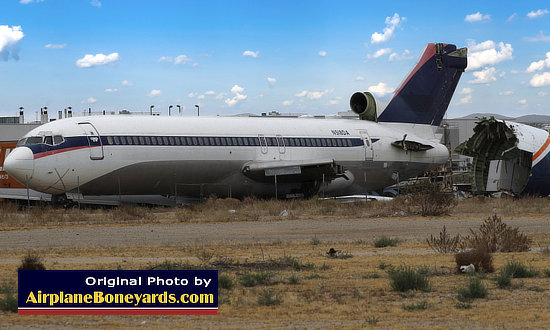 |
Jet engine reclamation operations at the Pinal Airpark, Arizona (Staff Photo) |
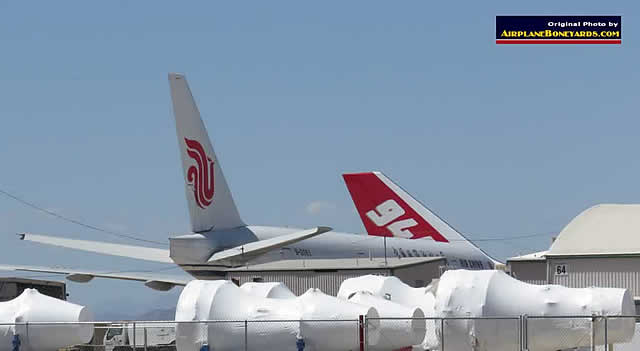 |
More Information About the Aircraft Recycling Industry
The Aircraft Fleet Recycling Association (AFRA) is a leading global, non-profit trade group devoted to promoting environmentally safe practices in the recyclilng and salvaging of aircraft parts and materials. AFRA was established in 2006.
Nearly every major aircraft and engine manufacturer are members of AFRA, including Boeing, Bombardier, Embraer and Rolls-Royce. Membership also includes a large number of companies engaged in aircraft maintenance, repair, storage, parts reclamation and recycling.
AFRA offers disassembly guides, research & development efforts, accreditation, audits, and other services to the industry.
We recommend a visit to the website of the Aircraft Fleet Recycling Association for more information on environmentally-friendly aircraft disassembly and recycling.
Photographs of Airliners Being Dismantled
Boeing 737-700, GOL Brazilian airlines, registration N320GL, undergoing salvage at the Pinal Airpark in Arizona (Staff Photo, May 2017) |
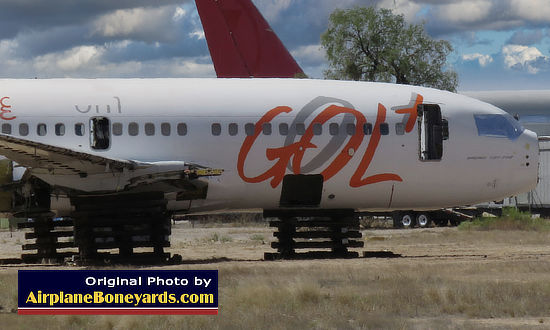 |
Southwest Airlines Boeing 737 being reclaimed at the Pinal Airpark in Arizona (Staff photo) |
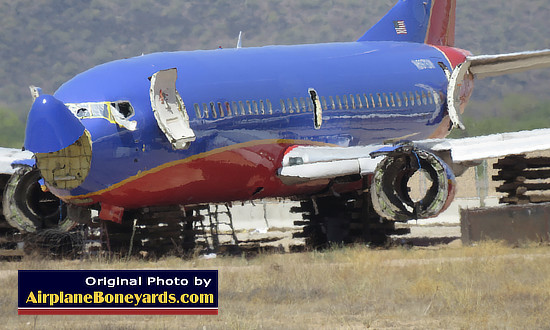 |
Delta Air Lines Boeing 757-232 N604DL being salvaged at the Pinal Airpark in Arizona (Staff Photo, May 2017) |
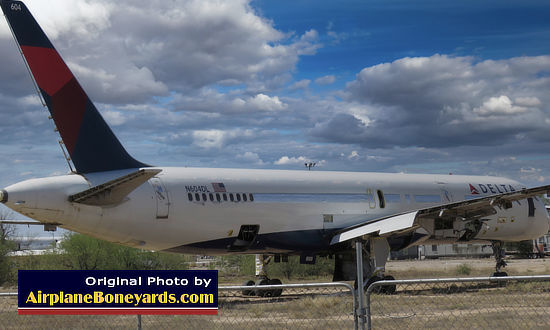 |
Map of locations of major airplane boneyards and storage facilities around the World
